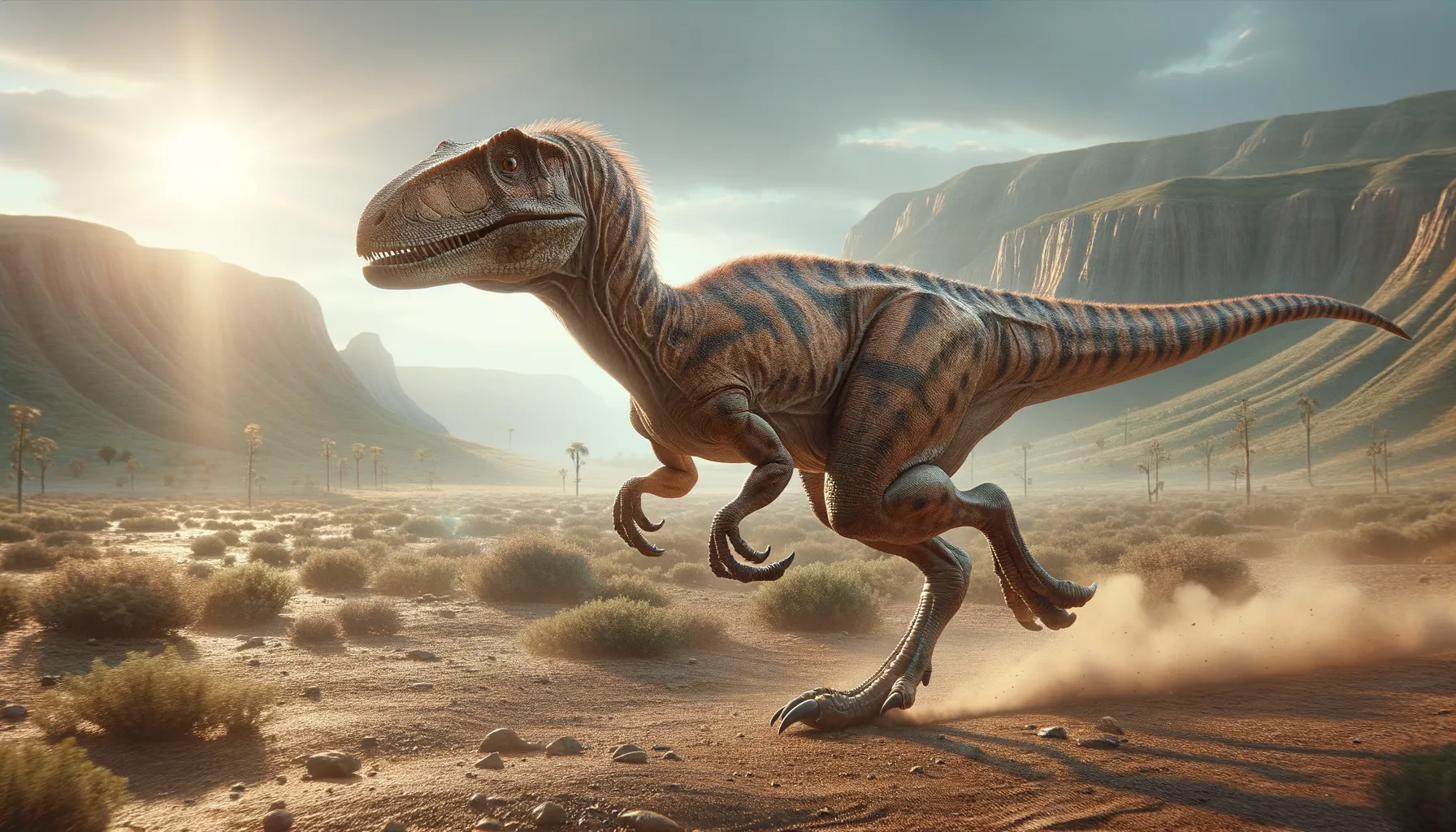
Orodromeus
A speedy herbivore from the ancient past!
Period
Cretaceous
Length
Roughly 2 to 2.5 meters long.
Height
Around 1 meter tall at the hips.
Weight
Approximately 15 to 25 kilograms.
Orodromeus was a small, bipedal herbivorous dinosaur that roamed the Earth during the Late Cretaceous period around 75 million years ago. With its small size and agile build, it was well-suited for quick sprints to escape predators. This dinosaur is mainly known from fossils found in North America. Its herbivorous diet mainly consisted of low-growing vegetation. Orodromeus showcases the incredible diversity of dinosaur species during this period.
Diet
Orodromeus was primarily a herbivore, feeding on low-growing plants. It likely foraged for ferns, cycads, and other vegetation. This diet allowed it to survive in a lush but competitive environment.
Hunting
Orodromeus did not hunt as it was herbivorous. Instead, it foraged for food and used its speed to avoid predators. It likely traveled in groups to maximize foraging efficiency and safety.
Environmental challenges
Orodromeus faced predators such as larger theropods and had to rely on its agility for escape. It also contended with competition for resources with other herbivores of its size. Environmental changes, such as shifting climates and vegetation, presented challenges for finding consistent food sources. Survival depended on adapting to these dynamic conditions.
Speed
Relatively fast runner for its size.
Lifespan
Estimated around 5 to 10 years.
First discovery
First discovered in Montana, USA, in 1984.
Fun Facts
- Orodromeus was a small dinosaur, roughly the size of a turkey, that lived about 75 million years ago during the Late Cretaceous period.
- This dinosaur was a fast runner, thanks to its long legs, which helped it escape predators.
- Orodromeus had a beak-like mouth perfect for snipping leaves, making it a herbivore.
- Its fossilized eggs were first discovered in the Two Medicine Formation in Montana, USA, giving clues about its nesting behavior.
- Orodromeus is believed to have lived in groups, which might have offered protection from predators.
- Despite being known from fragmentary remains, Orodromeus has helped paleontologists understand more about the behavior and development of small, bird-like dinosaurs.
- This dinosaur's name means 'mountain runner,' highlighting its agile nature.
Growth and Development
Orodromeus experienced a rapid growth phase in its early life to quickly reach a size less vulnerable to predators. Juveniles likely remained under the care or at least company of adults to learn survival skills. Skeletal development suggests it was agile from an early age, rapidly developing muscles for swift movement. Parental investment might have included nesting and defense of young.
Habitat
It lived in what is today North America, inhabiting forested regions and open plains. The terrain provided ample vegetation for grazing while offering cover from predators. Seasonal changes might have influenced its migratory patterns in search of food. This habitat supported a diverse ecosystem, allowing for rich interactions with other species.
Interaction with other species
Orodromeus interacted with larger herbivores, possibly sharing feeding grounds. It needed to constantly be aware of theropod predators like Troodon that shared its environment. It may have engaged in mutualistic relationships with other herbivores to enhance foraging. Social groups within its species might have provided additional protection and foraging benefits.
Natural lifespan
In the wild, Orodromeus naturally lived around a decade.
Reproduction
Orodromeus likely reproduced by laying eggs in communal nests, providing some level of parental care. Nesting sites possibly housed multiple clutches, suggesting social behavior in raising young. The incubation period likely coincided with optimal environmental conditions. Protective strategies could have included nesting in hidden or hard-to-reach locations.
Social behaviour
Orodromeus might have lived and traveled in small, cohesive groups. Social structures could have supported foraging efficiency and predator vigilance. Communication likely included visual and vocal signals to alert of danger. Cooperative behaviors possibly extended to shared nesting and raising of young.
Fossil locations
Fossils of Orodromeus have primarily been discovered in North America, particularly in Montana. The site of discovery was rich in findings, providing key insights into its physical structure and lifestyle. These fossil locations suggest it inhabited varied terrains from forested to open plains. The density of findings indicates it may have been a common dinosaur during its time.
